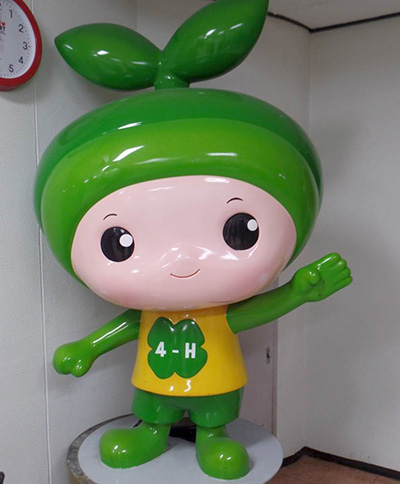4-H around the world: South Korea
4-H has spread around the world. Let’s explore 4-H in South Korea.

The Michigan State University Extension series exploring 4-H around the world continues with South Korea, which has over 70,000 4-H members. South Korea 4-H focuses on the values of agriculture, environment and life. You can even check them out on Facebook through their Korea 4-H Facebook page. The Korea 4-H Association is the 4-H activity supervising organization. According to the Korea 4-H Association, “4-H is a social education movement, which helps to inspire the youth of Korea to be agriculturally minded, as well as to become well-rounded individuals by living by the 4-H club ideals of head, heart, hands and health.”
The Korean words for the four H’s are head—chi; heart—dok; hands—no; and health—che. The Korea 4-H movement has a partnership with the public and private sector with leadership from the Rural Development Administration, the Agricultural Research and Extension Services and the Korea 4-H Association.
How does 4-H look in South Korea? 4-H started in Korea in 1945 after its independence from Japan. Clubs were known as “rural youth clubs” designed to help youth play a role in reviving underdeveloped rural communities. In the early 50s there were 1,900 4-H clubs with 50,000 members. During the Korean War, 4-H clubs were not active. After the war, with government and private support, 4-H became a driving force in post-war redevelopment in rural communities. With the industrialization of Korea in the 90s, more people began moving to the cities from the rural areas, which impacted the agricultural 4-H program. To increase 4-H participation, programming was expanded to urban schools. The National 4-H Center was founded in Seoul in 1990.
 Korea 4-H has three age groups with programs designed for each group. Childhood 4-H members, aged 9-12, have a focus on learning 4-H ideas and developing an agricultural and eco-friendly mind. Teenager 4-H, aged 13-19, focuses on youth leadership and life skill development and developing the potential to be an agricultural successor. Young adult 4-H, aged 20-29, focuses on helping youth become young leaders in their community and on developing advanced farmers. Adult leaders are 30 and older. Five percent of the clubs are in 2,000 schools with clubs being led by teachers during the school day. The 4-H program offers group and individual-based projects, a variety of educational training programs, outdoor activities, a national completion and fair festival, a national 4-H, and international exchanges.
Korea 4-H has three age groups with programs designed for each group. Childhood 4-H members, aged 9-12, have a focus on learning 4-H ideas and developing an agricultural and eco-friendly mind. Teenager 4-H, aged 13-19, focuses on youth leadership and life skill development and developing the potential to be an agricultural successor. Young adult 4-H, aged 20-29, focuses on helping youth become young leaders in their community and on developing advanced farmers. Adult leaders are 30 and older. Five percent of the clubs are in 2,000 schools with clubs being led by teachers during the school day. The 4-H program offers group and individual-based projects, a variety of educational training programs, outdoor activities, a national completion and fair festival, a national 4-H, and international exchanges.
Michigan 4-H sent its first international exchange delegate to South Korea in the summer of 2016. This was part of the States' 4-H International Exchange Program. A variety of exchange programs through travel and hosting are available through Michigan 4-H. For more information, visit the Michigan 4-H International Exchange website.
Michigan State University Extension and the Michigan 4-H Youth Development program help to prepare youth as positive and engaged leaders and global citizens by providing educational experiences and resources for youth interested in developing knowledge and skills in these areas. To learn about the positive impact of Michigan 4-H youth leadership, civic engagement, citizenship and global/cultural programs, read our 2015 Impact Report: “Developing Civically Engaged Leaders.”
Other global educational opportunities can also be found on the MSU Extension Global and Cultural Education webpage. For more information about 4-H learning opportunities and other 4-H programs, contact your county MSU Extension office.
Other articles in this series
- 4-H around the world: Africa
- 4-H around the world: St. Croix
- 4-H around the world: Michigan-Belize connection
- 4-H around the world: Costa Rica
- 4-H around the world: Trinidad and Tobago 4-H
- 4-H around the world: Canada
- 4-H around the world: Norway
- 4-H around the world: Finland
- 4-H around the world: Nepal – Part 1
- 4-H around the world: Nepal – Part 2



 Print
Print Email
Email




